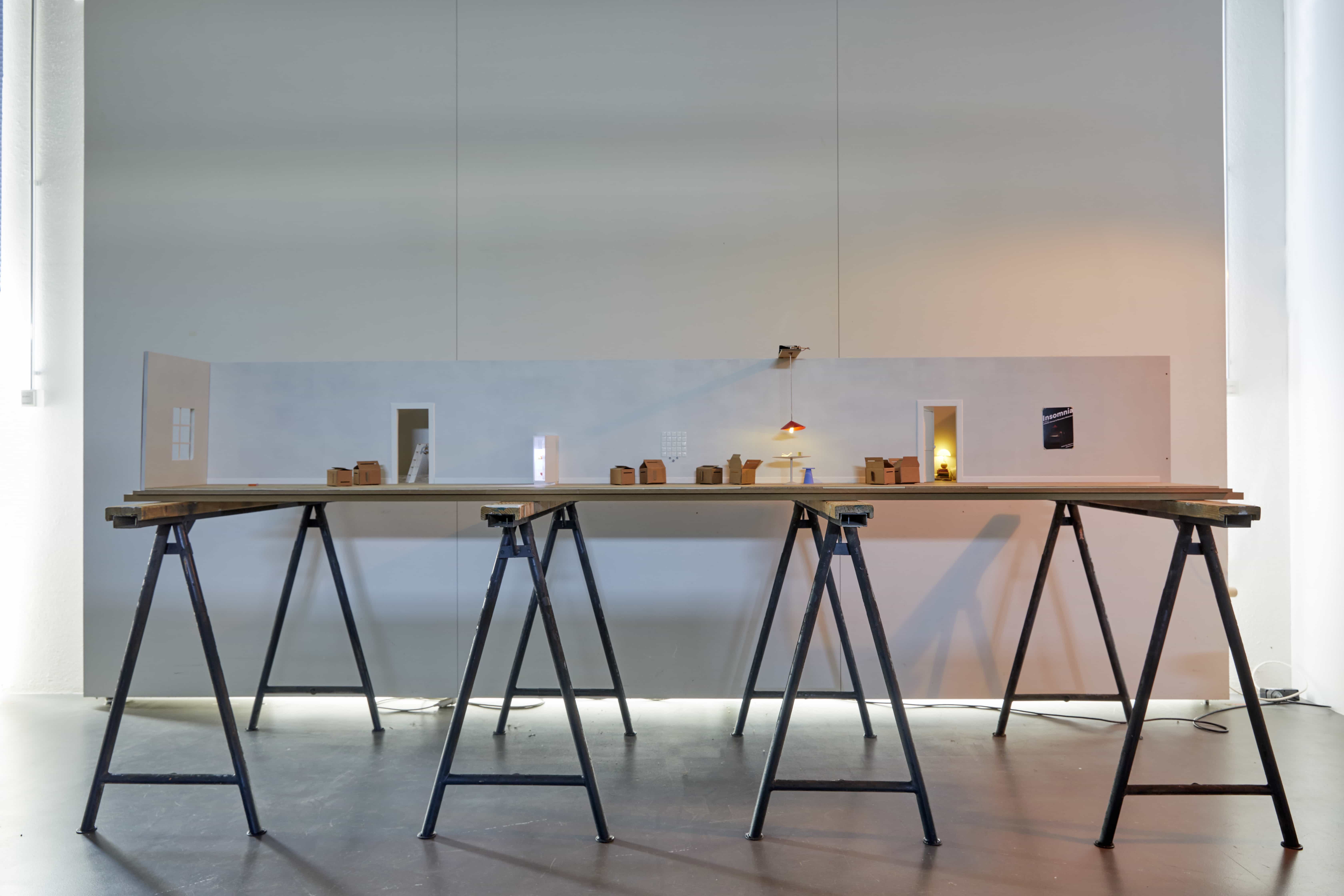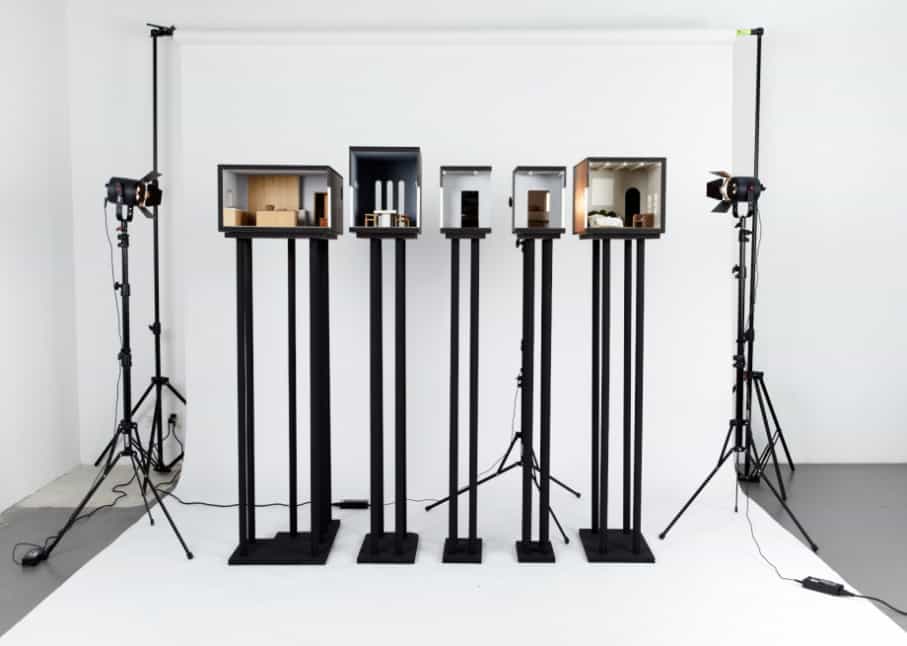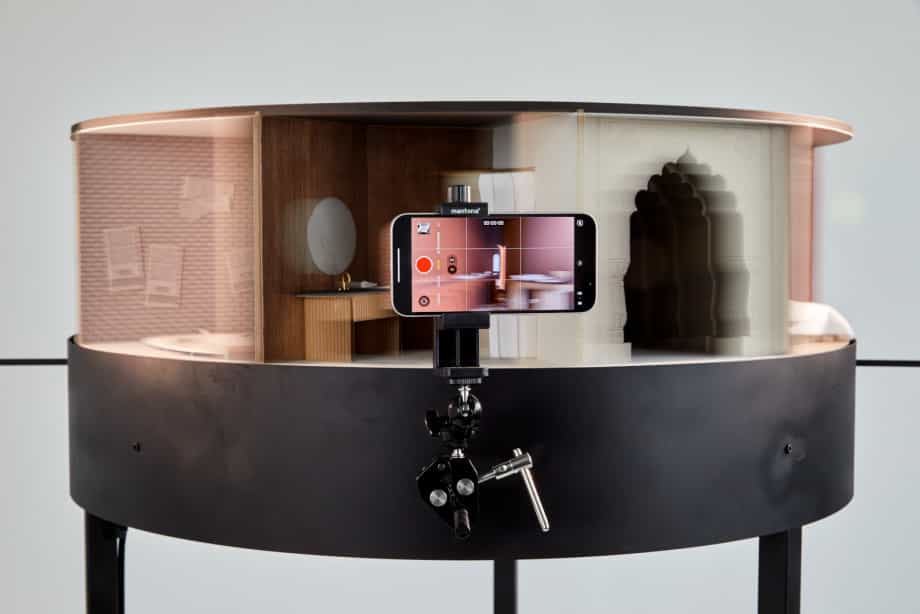Studio: Plan-séquence
Spring semester 2022
Studio Critic: Youri Kravtchenko
HEAD – Genève, Geneva
The long take, a shot with a duration longer than the conventional editing pace of a film, often involves significant camera movement and elaborate blocking, creating a self-referential temporality within the cinematic space. Similarly, the nocturnal phenomenon of insomnia, a sleep disorder characterized by persistent difficulty falling asleep or staying asleep, constructs a different tempo within the night. In an unprecedented approach, both scientifically and design-wise, this studio focuses on the relationship between the moving image and the physical presence of night scenes that are "ready to be filmed," using them as a pretext to explore, study, and reflect upon the phenomenon of insomnia through the cinematic long take.
Insomnia, the "scourge of Western societies," which affects close to 20% of the population according to the French Institute INSERM, is a timeless moment often perceived as an endless, distressing experience by those who suffer from it. The long take allows the filmmaker to delve deep into the intricacies of this phenomenon, capturing the restlessness and solitude that accompany sleepless nights. In a nocturnal context, the absence of cuts and the continuous flow of the long take mirror the uninterrupted stretch of time during the night. The camera becomes a silent observer, navigating through dimly lit spaces, accentuating the eerie stillness and heightened senses that accompany the nocturnal hours.
As a design methodology, the studio is divided into three acts. The first act commences with a precise and meticulous survey of a cult scene, captured in a sequence shot, drawing inspiration from examples in the history of cinema. The second act involves guiding students to create an initial image using a scale model and set design. Finally, the epilogue entails producing a video using simple tools such as a smartphone or a traditional video recorder. These elements alone suggest the possibility of a waking dream captured in the moving image, with the camera becoming an extension of the protagonist's consciousness, offering a first-person perspective that immerses the audience in the character's thoughts and emotions.
Lighting becomes a crucial element in portraying the nocturnal atmosphere. Shadows and contrasts play a significant role, contributing to the visual metaphor of the mind's struggle to find peace amidst the darkness. The long take allows for a meticulous manipulation of light and shadow, creating a visual representation of the internal turmoil associated with insomnia. Sound design also becomes paramount in conveying the insomnia experience. The absence of cuts enables a continuous sonic environment, capturing the subtle sounds that become magnified in the stillness of the night—the creaking of floorboards, the ticking of a clock, distant sirens, or the rustling of leaves. These auditory elements not only enhance the realism but also contribute to the psychological impact of the film, intensifying the audience's connection with the protagonist's restless state.
Utilizing the long take in cinema to delve into the theme of insomnia within a nocturnal setting adds a layer of depth and authenticity to the portrayal of this phenomenon. The technique's capacity to capture the uninterrupted flow of time, manipulate lighting and sound, and provide a subjective perspective makes it a compelling tool for exploring the complexities of the human psyche during sleepless nights. The long take becomes a cinematic canvas, painting a vivid and immersive picture of the nocturnal experience of insomnia.
HEAD – Genève: Department of Interior Architecture
Head of Department : Javier Fernández Contreras
Scientific Deputy: Valentina de Luigi
Studio Critic: Youri Kravtchenko
Assistant: Cécile-Diama Samb
Students: Juliette Cornaz, Alexandra Miskufova, Leana Teixeira, et al.
Photography: Guillaume Collignon


